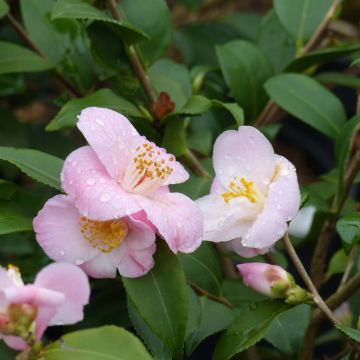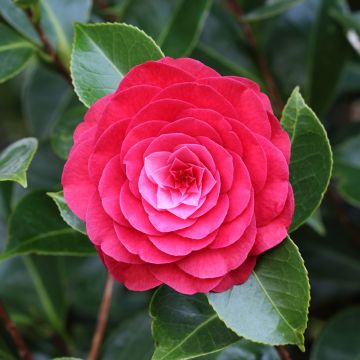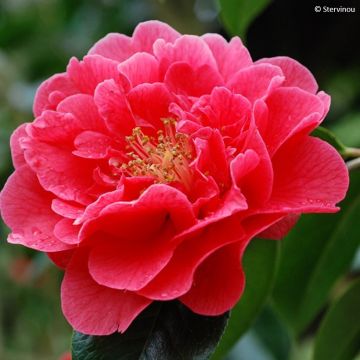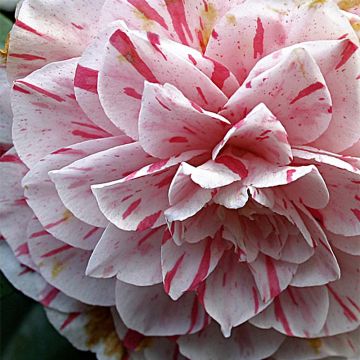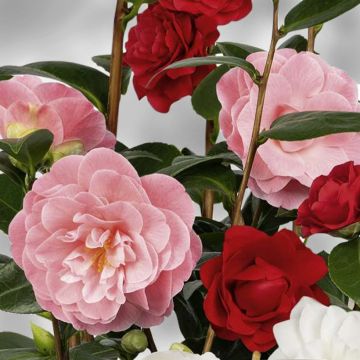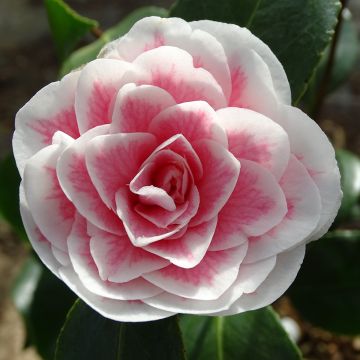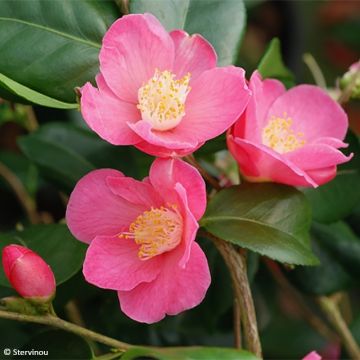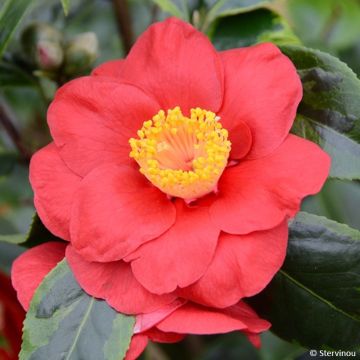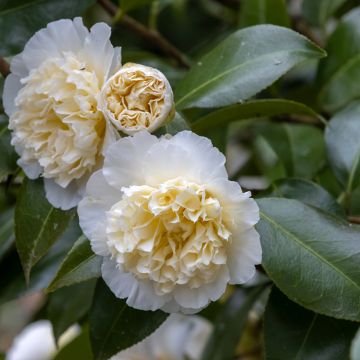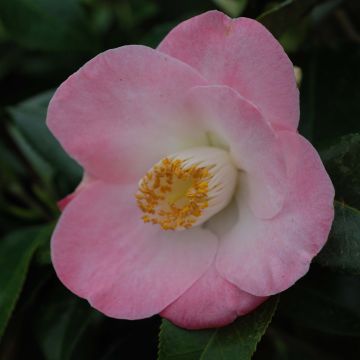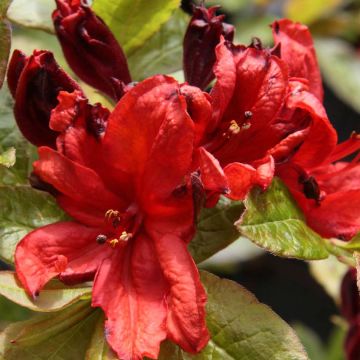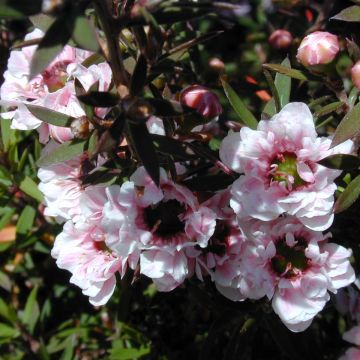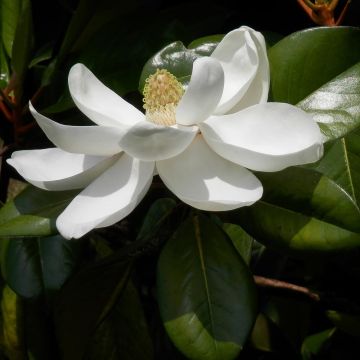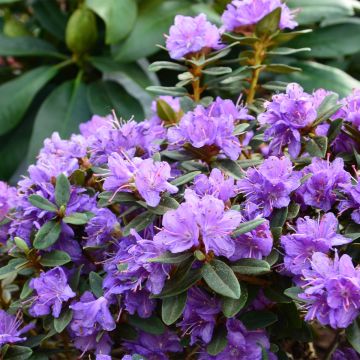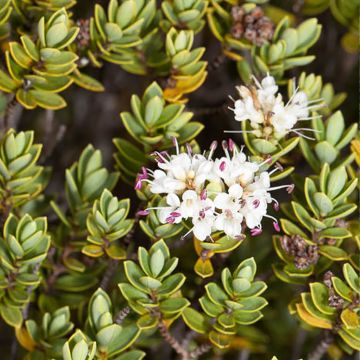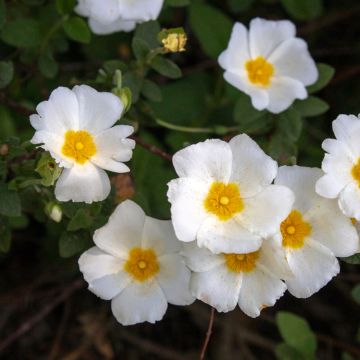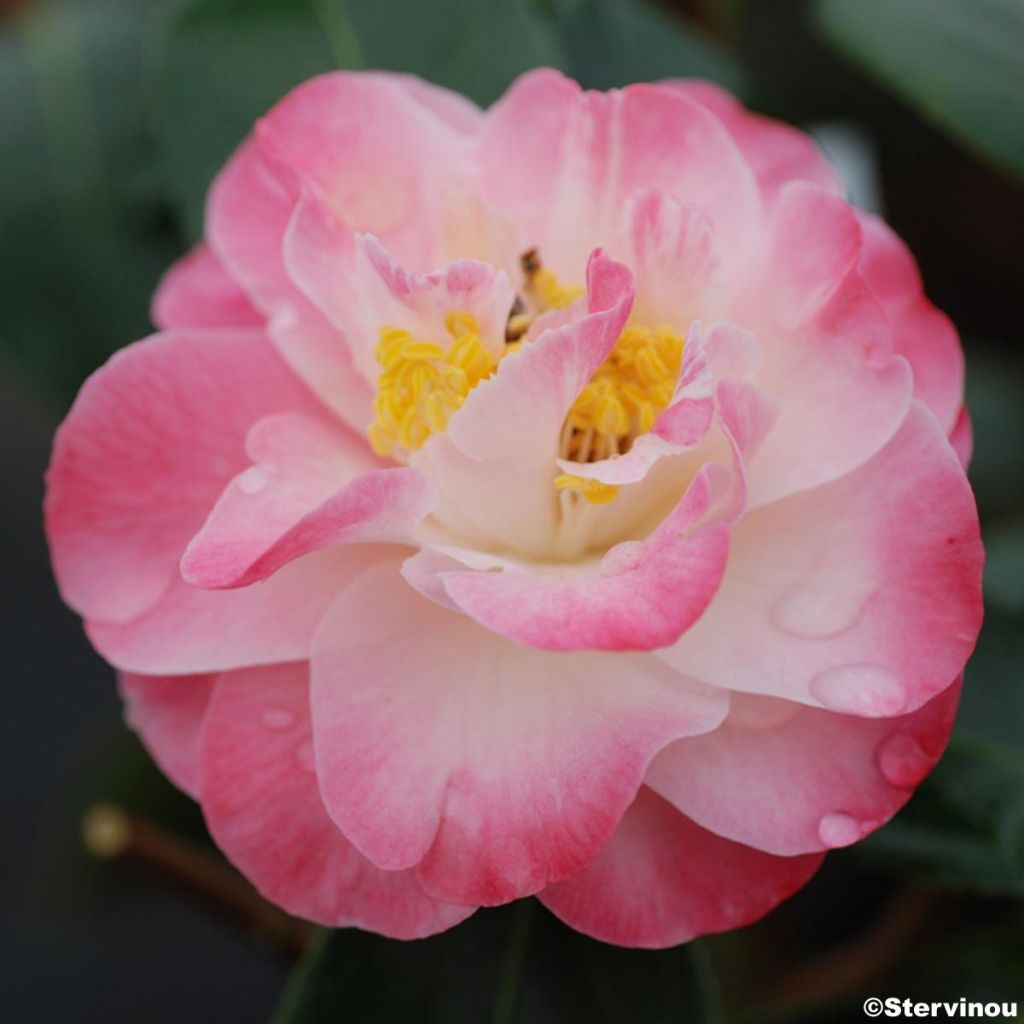

Camellia williamsii Spring Daze
Camellia williamsii Spring Daze
Camellia x williamsonii Spring Daze
Young plant conforming to the photo. I can't wait to see it in flower, but I'll have to be patient for a little while...
Mélissandre, 19/07/2022
This item cannot be shipped to the selected country
Delivery charge from €5.90
More information
Schedule delivery date,
and select date in basket
This plant carries a 24 months recovery warranty
More information
We guarantee the quality of our plants for a full growing cycle, and will replace at our expense any plant that fails to recover under normal climatic and planting conditions.
From €5.90 for pickup delivery and €6.90 for home delivery
Express home delivery from €8.90.

Does this plant fit my garden?
Set up your Plantfit profile →
Description
Camellia 'Spring Daze', also known as Camellia x williamsii or Winter Camellia, stands out for its long flowering period from early winter to early spring. It produces double flowers that bloom in pale pink with a slightly deeper pink edge. This large, elegant Camellia has evergreen, glossy dark green foliage and a highly decorative grey-brown bark. This selection also has the advantage of good hardiness.
Camellia 'Spring Daze' belongs to the Theaceae family. Selected by the Kramer nursery in Upland, California, "Spring Daze" is one of many selections derived from Camellia x williamsii, a hybrid between the Eastern Asian species Camellia japonica and Camellia saluenensis (mountains of Western China). It has a bushy and compact habit, rounded to oval, and a slender silhouette. It reaches a height of 3m (10 ft) with a spread of 2.50m (8 ft). Its growth is slow to moderate. It continuously blooms for a large part of winter and spring. Its double, imbricate flowers are medium-sized and open in a very bright pink gradient. Each flower has many symmetrically arranged petals and a central group of white stamens accompanied by yellow anthers. If protected from frost, 'Spring Daze' blooms from early winter to early spring. Flowering may be delayed in colder situations. The foliage is leathery, glossy dark green, and the leaves are dentate. Finally, the smooth bark of this large shrub is charming in a very soft grey-brown color.
Plant Camellia x williamsii 'Spring Daze' in humus-rich, acid soil that is always moist but well-drained. This bush will thrive in shade, partial shade, or non-scorching sun once established. Although it is one of the hardiest camellia hybrids, the foliage and flower buds may suffer in cold winds and excessive sunlight. The rooting of this plant remains shallow, so it may be beneficial to install a thick mulch around its base to maintain moisture. Regular watering and application of ericaceous plant fertiliser just after flowering will help promote optimal growth. Pruning is not necessary but if required should be done sparingly just after flowering, before the emergence of new spring shoots. Most camellia hybrids do not recover from hard pruning.
'Spring Daze' Camellia belongs to a group of hybrids that is excellent at integrating into the garden. It can be used as a specimen plant, but it will also shine in a flowering hedge or at the back of a mixed border. It is also suitable for cultivation in a large pot on a terrace or sheltered balcony; in this case, attention should be given to the water given the plant (which must be non-calcareous) and regular fertilisation.
The original Camellia x Williamsii was created in Great Britain in the 1930s; by the 1940s several cultivars were highly sought after due to their hardiness and abundant flowering that lasted throughout winter and spring.
Report an error about the product description
Camellia williamsii Spring Daze in pictures
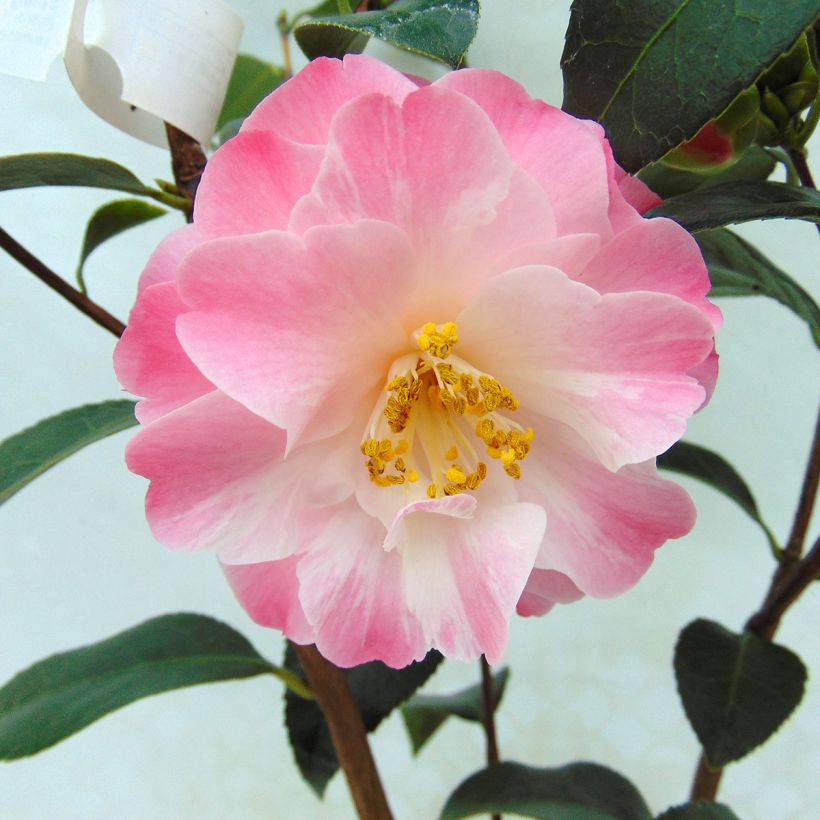

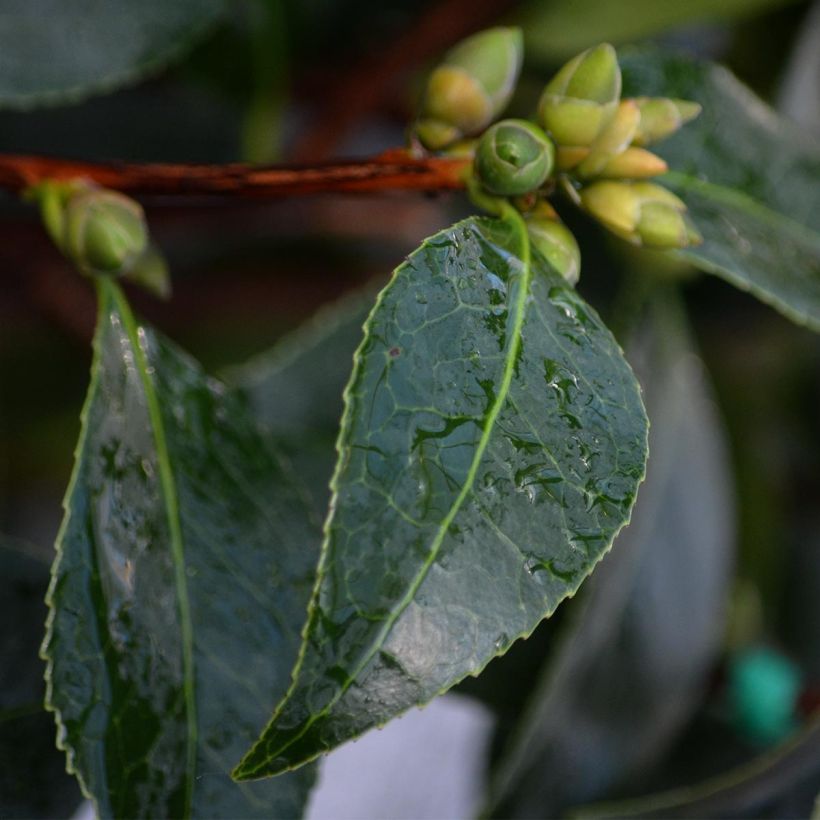

Plant habit
Flowering
Foliage
Botanical data
Camellia
x williamsonii
Spring Daze
Theaceae
Cultivar or hybrid
Other Traditional Camellia
Planting and care
Plant Camellia x williamsii 'Spring Daze' in humus-rich soil, preferably acidic, always moist but well-drained. This bush will thrive in shade, partial shade, or non-scorching sunlight once established. Although it is one of the hardiest camellia hybrids, the foliage and flower buds may suffer from cold winds and excessive sunlight. The root system of this young plant remains shallow, so it can be beneficial to install a thick mulch around its base to maintain moisture. Applying ericaceous plant fertiliser just after flowering and watering will help promote optimal growth.
Planting period
Intended location
Care
-
, onOrder confirmed
Reply from on Promesse de fleurs
Evergreen shrubs
Haven't found what you were looking for?
Hardiness is the lowest winter temperature a plant can endure without suffering serious damage or even dying. However, hardiness is affected by location (a sheltered area, such as a patio), protection (winter cover) and soil type (hardiness is improved by well-drained soil).

Photo Sharing Terms & Conditions
In order to encourage gardeners to interact and share their experiences, Promesse de fleurs offers various media enabling content to be uploaded onto its Site - in particular via the ‘Photo sharing’ module.
The User agrees to refrain from:
- Posting any content that is illegal, prejudicial, insulting, racist, inciteful to hatred, revisionist, contrary to public decency, that infringes on privacy or on the privacy rights of third parties, in particular the publicity rights of persons and goods, intellectual property rights, or the right to privacy.
- Submitting content on behalf of a third party;
- Impersonate the identity of a third party and/or publish any personal information about a third party;
In general, the User undertakes to refrain from any unethical behaviour.
All Content (in particular text, comments, files, images, photos, videos, creative works, etc.), which may be subject to property or intellectual property rights, image or other private rights, shall remain the property of the User, subject to the limited rights granted by the terms of the licence granted by Promesse de fleurs as stated below. Users are at liberty to publish or not to publish such Content on the Site, notably via the ‘Photo Sharing’ facility, and accept that this Content shall be made public and freely accessible, notably on the Internet.
Users further acknowledge, undertake to have ,and guarantee that they hold all necessary rights and permissions to publish such material on the Site, in particular with regard to the legislation in force pertaining to any privacy, property, intellectual property, image, or contractual rights, or rights of any other nature. By publishing such Content on the Site, Users acknowledge accepting full liability as publishers of the Content within the meaning of the law, and grant Promesse de fleurs, free of charge, an inclusive, worldwide licence for the said Content for the entire duration of its publication, including all reproduction, representation, up/downloading, displaying, performing, transmission, and storage rights.
Users also grant permission for their name to be linked to the Content and accept that this link may not always be made available.
By engaging in posting material, Users consent to their Content becoming automatically accessible on the Internet, in particular on other sites and/or blogs and/or web pages of the Promesse de fleurs site, including in particular social pages and the Promesse de fleurs catalogue.
Users may secure the removal of entrusted content free of charge by issuing a simple request via our contact form.
The flowering period indicated on our website applies to countries and regions located in USDA zone 8 (France, the United Kingdom, Ireland, the Netherlands, etc.)
It will vary according to where you live:
- In zones 9 to 10 (Italy, Spain, Greece, etc.), flowering will occur about 2 to 4 weeks earlier.
- In zones 6 to 7 (Germany, Poland, Slovenia, and lower mountainous regions), flowering will be delayed by 2 to 3 weeks.
- In zone 5 (Central Europe, Scandinavia), blooming will be delayed by 3 to 5 weeks.
In temperate climates, pruning of spring-flowering shrubs (forsythia, spireas, etc.) should be done just after flowering.
Pruning of summer-flowering shrubs (Indian Lilac, Perovskia, etc.) can be done in winter or spring.
In cold regions as well as with frost-sensitive plants, avoid pruning too early when severe frosts may still occur.
The planting period indicated on our website applies to countries and regions located in USDA zone 8 (France, United Kingdom, Ireland, Netherlands).
It will vary according to where you live:
- In Mediterranean zones (Marseille, Madrid, Milan, etc.), autumn and winter are the best planting periods.
- In continental zones (Strasbourg, Munich, Vienna, etc.), delay planting by 2 to 3 weeks in spring and bring it forward by 2 to 4 weeks in autumn.
- In mountainous regions (the Alps, Pyrenees, Carpathians, etc.), it is best to plant in late spring (May-June) or late summer (August-September).
The harvesting period indicated on our website applies to countries and regions in USDA zone 8 (France, England, Ireland, the Netherlands).
In colder areas (Scandinavia, Poland, Austria...) fruit and vegetable harvests are likely to be delayed by 3-4 weeks.
In warmer areas (Italy, Spain, Greece, etc.), harvesting will probably take place earlier, depending on weather conditions.
The sowing periods indicated on our website apply to countries and regions within USDA Zone 8 (France, UK, Ireland, Netherlands).
In colder areas (Scandinavia, Poland, Austria...), delay any outdoor sowing by 3-4 weeks, or sow under glass.
In warmer climes (Italy, Spain, Greece, etc.), bring outdoor sowing forward by a few weeks.

































